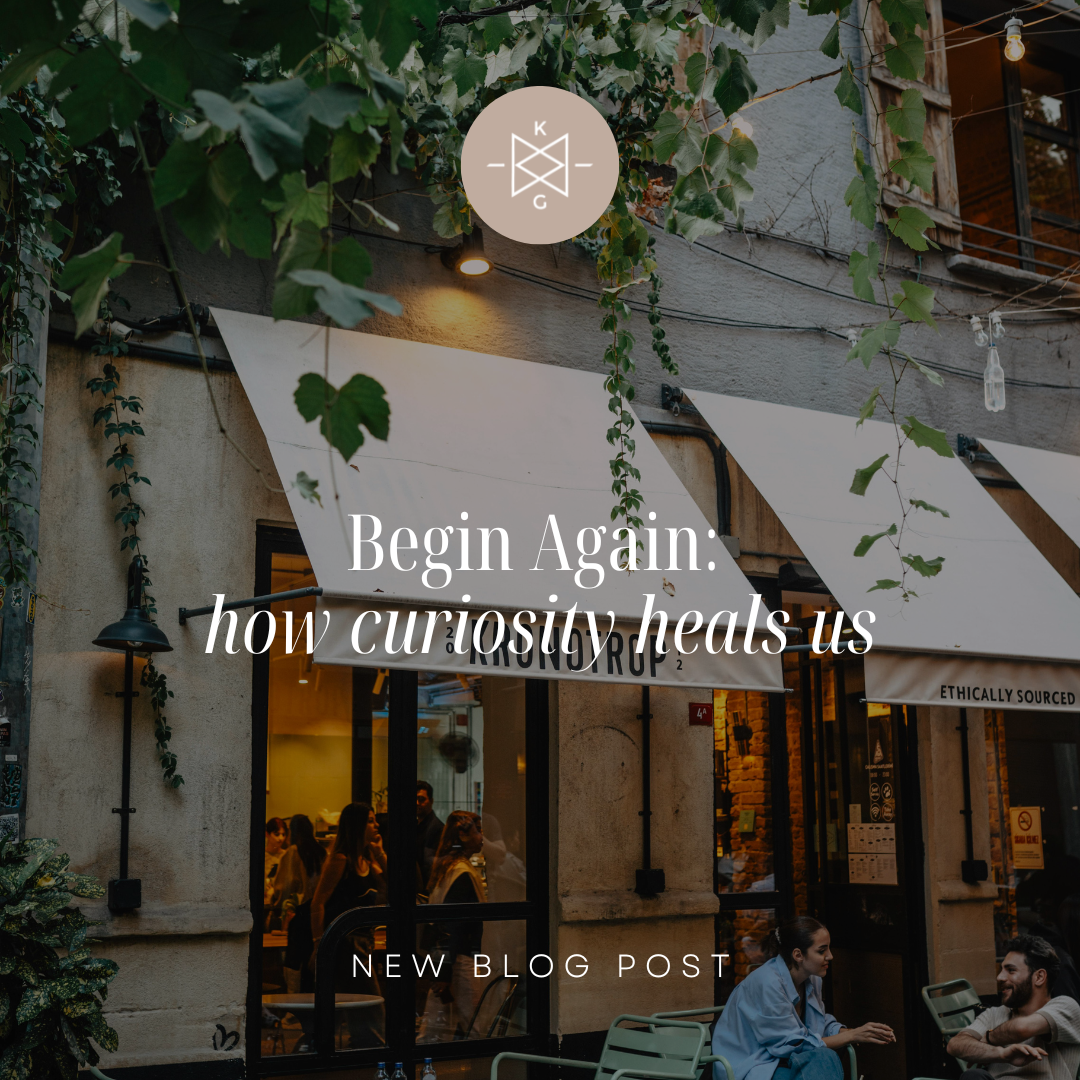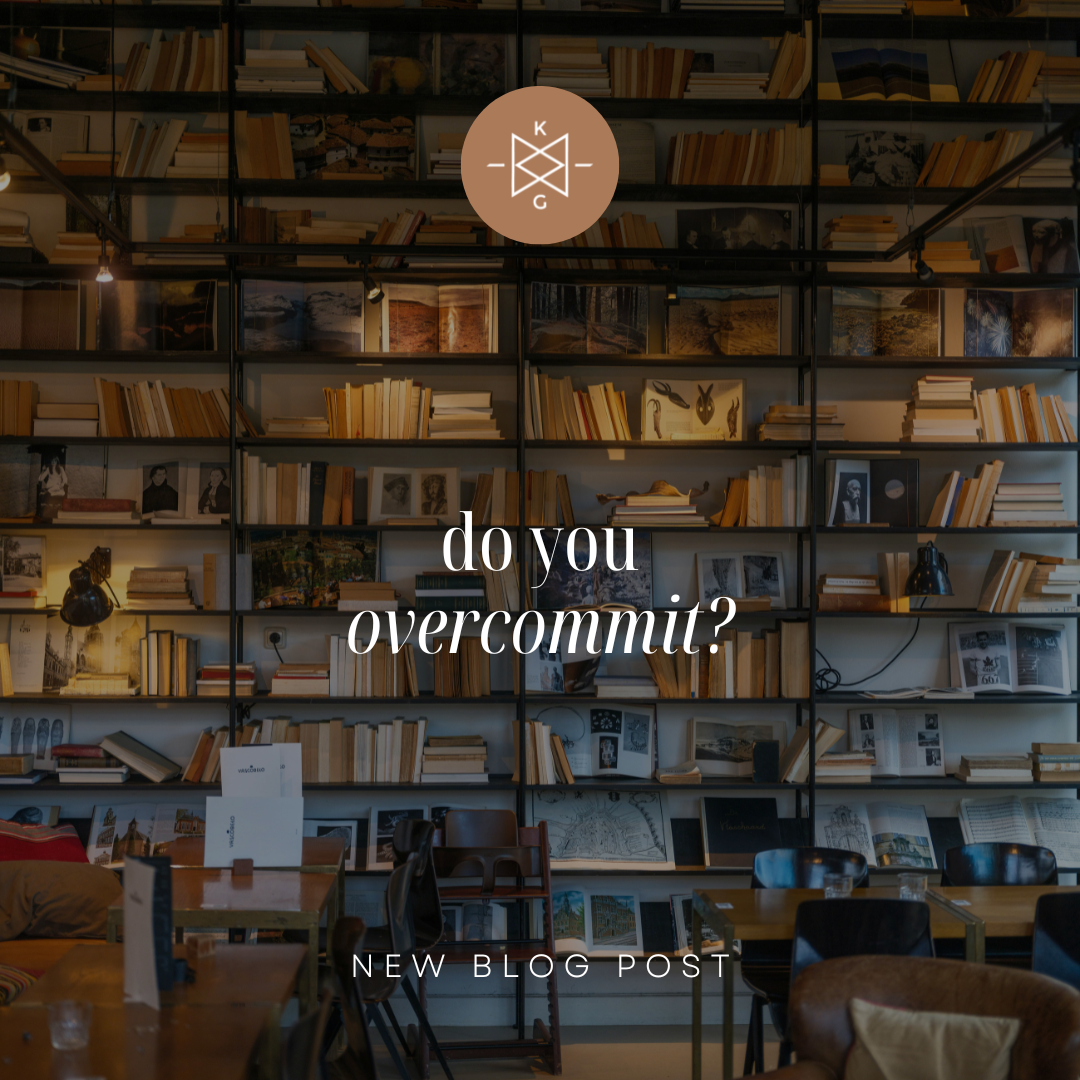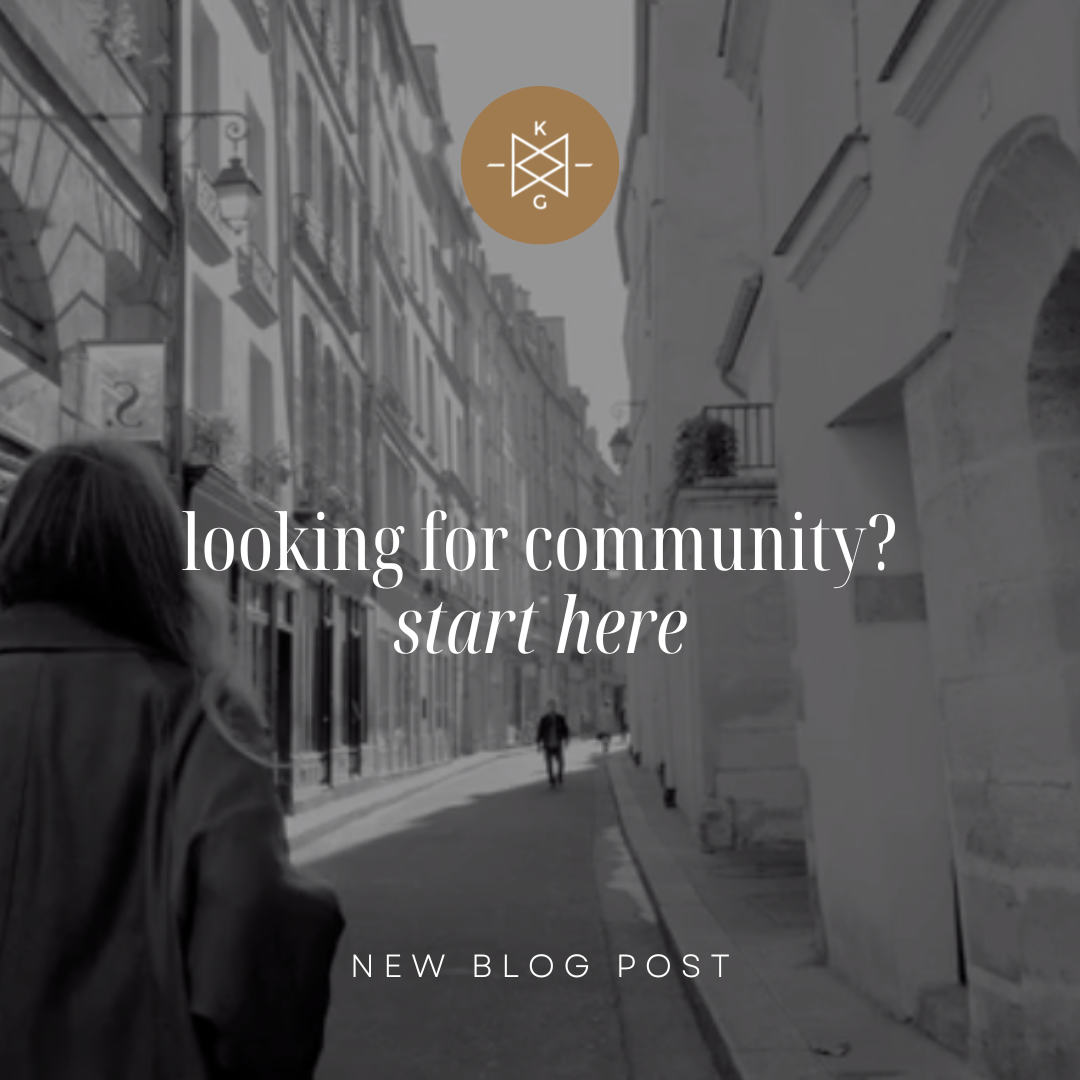
The Blog
Recently Featured
All Blogs
Better is Best: Say Goodbye to Perfectionism
“Perfectionism is the voice of the oppressor, the enemy of the people. It will keep you cramped and insane your whole life.”
-Anne Lamott
Raise your hand if you’ve ever struggled with perfectionism. Though I can’t see you right now, I have a hunch that most of you have your hands up, either literally or figuratively in your heart where no one else can see you. Perhaps you’re wondering if there are bigger problems than perfectionism at stake. Oh, I’ve got your number, I’m a recovering perfectionist.
Perfection is so illusive, yet so tempting, especially for all you creative, high-achievers out there. It’s a vain and futile attempt to attain the unattainable.
And guess what?
It’s impossible. Perfectionism is an overt, egoic striving to fill a covert, bleeding insecurity. If we’re really honest, perfection is just a scared man’s game.
I write these words with emboldened authority only because I’ve had a lifelong, toxic relationship with perfectionism. I don’t know the magic potion I sipped on so early in life to fuel the flame, but boy was it potent. I’ve been incredibly judgy and hard on myself from day one.
As a complex and sensitive kid (read: dramatic), being understood and well-received always took precedence. Acceptance, personal significance, and value were—and still are— my drug. I know, classic Enneagram four move!
The temptation is always: “I’m doing pretty good, but something’s missing.” This kind of thinking has kept me double bound in the fetal position of literal and figurative dark corners in life many times.
Anne Lamott is spot on when she says, “Perfectionism is the voice of the oppressor, the enemy of the people. It will keep you cramped and insane your whole life.”
For creatives especially, this phenomenon is mass genocide. I believe this is because ideas and concepts are birthed in our thinking mind, which can be an absolutely lovely place to be. We have a brilliant idea for a lyric, a new workflow, a painting, a proposal, and we run with it, executing it immediately and seamlessly, right? Bam…so easy.
Wrong. My experience as a writer and working with other creatives is this: that brilliant little idea gets locked up in the thinking mind, stewing and marinating in all kinds of saucy possibilities and grandeur, so much so that it never even sees the light of day.
Our minds are meant to be the sacred birthplace of ideas. Our minds were not meant to indefinitely house them, ultimately squeezing the life and breath out with quenching fumes of perfectionism. Social media doesn’t make this pursuit any easier as we get caught up in comparison games with people we don’t even know posting highlight reels from their otherwise normal life.
This can lead to such worthlessness and defeat, we either want to numb out somehow (drugs, booze, sex, shopping, busyness, work, what have you) or we abandon our creative calling altogether. This is around the time therapy sounds like a promising option.
David Foster Wallace said it this way, “Perfectionism is very dangerous. Because of course if your fidelity to perfectionism is too high, you never do anything.”
I suspect you want to do great things: to be seen, known, and truly loved. I do too. The only problem is, this requires tons of courage…and vulnerability. Perfectionism doesn’t leave much room for them.
What if we could aim for better instead of perfect? To slowly build on the baby steps of gradual improvement...choosing the next best thing? This type of growth mindset leaves room for the successes, the failures, and the stalls. Best of all, you hold the keys to your life, not some illusive, phony version of you.
This week, what would it look like to choose better over perfect?
Love & Gratitude,
Katie
P.S. There's still time to join me, Kuola, and Ally at our Self-Care Workshop on February 8-9 in Nashville. Sign-up today!
Say Yes to the Scale (not what you think)
“Argue for your limitations and you get to keep them.”
-Elizabeth Gilbert
I’m not a huge fan of the scale in my bathroom. In fact, I bought a new scale for the first time in ages when I found out I was pregnant last February. For the first time, I found it a bit thrilling (if not bizarre) to experience my body changing and growing as it housed my now four-month-old son, Tucker. I mean, when else do we as women feel totally empowered to see that number increase?
Today, I’m not talking about numbers or that kind of scale. This is not about how to lose unwanted weight you may have picked up over the holidays. No, this is not that blog.
There’s another scale I believe to be far more impactful to your health and interestingly enough, has better metrics than the one in your bathroom. In fact, it won’t only help you feel better physically, but emotionally and spiritually as well.
Oh, and one more thing, it’s totally free and portable.
Backstory:
I’ve spent my whole adult life in the pursuit of wholeness—integration, looking to find the solution to my own brokenness and ongoing battle with depression/anxiety. That was my story for a long time. I let the pain of sadness and victimhood define me while concurrently searching for something “out there” that would solve the problems “in here.”
Perhaps you identify with my journey.
When I didn’t find what I was looking for (queue U2 “Still haven’t found what I’m looking for”), I decided I needed a different approach. This quest proved to me that happiness is, indeed, an inside job, one that is more spiritual than circumstantial. By spiritual, I mean the capacity inside each one of us to be receptive and open to something greater than us...something really good.
After all, numbers on a weight scale constantly fluctuate and even when they give you a sliver of relief, that relief is only temporary and can crumble with life’s inevitable challenges just hours later at lunchtime.
What is this transformational work that can heal us from the inside-out?
It’s thought work, specifically, our thought scale. And yep, you’ve already got one, you may not be aware of it though.
It’s been proven that we have the power to change our lives and circumstance just by changing our thoughts. Why? Because every single thought you think creates an emotion in your body which results in corresponding behavior. These behaviors, over time, build out your life.
If I entertain self-defeating thoughts all day long, those thoughts produce low-frequency emotions such as fear, hurt, victimization, and on the lowest end of that scale, apathy. As a result, my actions that follow correspond with those emotions. When I’m consciously aware of my thoughts, and choosing ones that are life-giving as opposed to limiting, the domino effect that creates in my physical experience is tangibly better than when I’m stuck in a pity party.
Don’t worry, this is not about getting it perfect, it’s about becoming aware of your thoughts and practicing a higher quality within them.
For example, it’s moving up the thought scale from, “There’s never enough time to do what I need to do” to “I’m giving myself grace to do my best right now.” (One I am constantly coming back to as I transition into motherhood!)
We don’t have control over all of our circumstances in life. We do, however, have control of how we think about our circumstances. This matters big time.
This week, I want you to play around with (a) becoming aware of your thoughts as you have them, and (b) practicing tiny shifts up the thought scale in order to help you feel better emotionally and physically. It’s subtle, so don’t go looking for a quick fix here.
Are you ready to shed the weight of your nagging inner critic. She’s heavy. What thoughts promote willingness and curiosity in your life today?
Love & Gratitude,
Katie
P.S. There's still time to join me, Kuola, and Ally at our Self-Care Workshop on February 8-9 in Nashville. Sign-up today!
The Fall Edit...7 Ways To Up Your Wellness Game
“Life starts all over again when it gets crisp in the fall.”
-F. Scott Fitzgerald
Fall is undoubtedly my favorite season. I feel a bit like Mr. Fitzgerald in that life seems to offer a second, and equally romantic, Spring, or new beginning when early October rolls around. Yet I’m also well acquainted with the struggles and temptations that come along with the changing seasons. The days get shorter, schedules mount up, self-care tends to wane, and I often feel a dank, subtle chill of loneliness sneak in.
Have you struggled much with seasonal depression?
I have…big time. That said, I’ve learned the hard way how vital it is to intentionally manage expectations and routines in order to stay connected to daily hope and healing. In light of this, I like to send out a Fall Edition of sorts—full of new ideas and opportunities to stay on top of our self-care game as we head into the coming months. If you follow fashion, it’s a bit like that thick, fresh, September Vogue edition boasting fall’s most delicious offerings. Pure magic.
This year, I’m more excited than ever to explore some new ways of connecting to yourself and your community in life-giving ways.
Too often we’re tempted into autopilot—that sleepy trance of contained chaos—and end up just going through the motions. I don’t know about you, but I want to feel alive and awake in my experience this fall, savoring each moment like a gift—or that inaugural pumpkin spice latte.
Here are a few ideas to support you in this pursuit. I think you’ll find something you can enjoy despite the hectic demands of the season.
Are you looking for ways to deepen your knowledge of the Enneagram, build new relationships, and do powerful therapeutic work in a safe environment? If so, the Bloom Group is for you. This monthly group is a blend of experiential group therapy and an Enneagram deep dive. Not only is it completely confidential and intimate (10 people per group), we use the construct of the Enneagram to understand our unique stories and write a hopeful, compelling next chapter. Loneliness is an epidemic in our culture and seems to show up at every corner, especially in fall and winter months. Bloom Group is a grounding opportunity to get ahead of that ache. For more info or to sign up, click here.
Neuroscience and brain-based therapies have become a huge passion of mine throughout the past several years. I’ve learned that oftentimes when we feel stuck in the past or a painful emotional experience, we can’t merely talk our way out of it in therapy. We need something deeper—more effective and transformative—to compliment the process.
This fall, I’m beyond thrilled to partner with NeurofeedbackNashville and offer you an opportunity to heal in a deeper way without working so hard in therapy. Neurofeedback is a totally passive, restful experience that provides the following results (to name a few):
Increased self-awareness as your brain witnesses itself and its patterns in real-time
When the brain gains that self-awareness it can mindfully choose its preferred optimal responses to life rather than defaulting to the same old feedback loops
As you continue training, this resilience—rather than reactivity—becomes a new unconscious skill
You feel calmer (or more focused, joyful, or whatever it is that your unique brain knows you need) without having to work so hard in talk therapy
I’ve been using Neurofeedback now for the last several months during my pregnancy and continue to be amazed by the results. More and more, I see my best self emerge and feel increased clarity and calmness. Curious? Check out this animated video and use code (HALFOFFTRAIN) when scheduling to enjoy 50% off your first session.
Much like Nashville’s very own Central Park, Radnor Lake is a picturesque pocket of nature with several serene trails to choose from if you’re looking for an excuse to get outside and behold the stunning leaves and light. It’s been something of a sanctuary for me throughout the 24 years I’ve lived in Nashville. The wildlife is rocking as well! Don’t be surprised to encounter plenty of deer and turkeys on the trail. Exercise and nature are two highly grounding components in life. Radnor allows you to fully experience the benefits of both.
This Holiday season starting in November, I’m inviting you into an eight-week meditation challenge. You’ll receive a (free!) meditation each week with a specific grounding focus. For example, gratitude, self-compassion, presence, creativity, expectations, rest, etc. Meditation is an incredible way to deepen self-awareness, foster a sense of calm, as well as build out resilience in the midst of chaos. Plus, there will be a fun surprise give-a-way at the end of the year you WON’T want to miss!! Stay tuned for more on this.
We don’t often realize it, but we wear our emotions on our face. As skin is our biggest organ and we lead with our lovely faces, it’s been fun to explore ways of taking care of mine, especially the older I get. With acne-prone, sensitive skin, I’ve struggled to find a good fit that won’t break the bank. Recently I learned of a holistic esthetician, Kari Zwickel, aka The Nourishing Skin Coach. She uses a completely different holistic approach to the skin, working with what’s already happening as opposed to forcing harsh, targeted treatments as a bandaid. She’s a wizard and a true teacher. Each time I’ve gone to see her, I feel like I’ve had a transformational mind-body-spirit experience. I also see my hormonal skin settling down and radiance start to emerge. For an intro into her method, don’t miss her fall skincare workshop. Coming up on Sept. 17th!
Do you struggle to know (for sure) what your Enneagram type is? If so, you’re not alone. Oftentimes, it can take months if not years to land on your true type. Let’s face it, there’s no such thing as a pure type. We’ve got a bit of every type tucked away inside. Some feel larger than others and yes, there is one that actually leads. One of my favorite ways of helping clients move deeper into the transformational work of the Enneagram is to support them in identifying their type using a unique typing inquiry process. We experience suffering when we make up limiting stories about our pain. I believe knowing and living from the true story about who we are is absolutely vital. Understanding our Enneagram type gets us one step closer to that truth. Interested? I’d love to chat.
I heard Richard Rohr once say, “If I’m not practicing constant gratitude, I become totally resentful.” Can I get an “Amen?” Unrealistic expectations, comparison with others, and lack of boundaries can leave us hardened, closed off to the joy of each moment. Keeping a gratitude journal is the perfect antidote to said temptations. You can use a journal from Target or buy a more structured one on Amazon. My favorite? The 5-minute journal. I believe gratitude is the ultimate pivotal powerplay. It can shift our focus from lack to abundance in a split second. It provides an opening—or way out—from the stuck, thin spaces we find ourselves in.
That’s a wrap! I can’t wait to hear how you’re taking care of you this fall…and maybe I’ll even see you soon at Radnor (with a stroller in tow)! :)
Love & Gratitude,
Katie
3 Tips for Loving Detachment
“But let there be spaces in your togetherness, And let the winds of the heavens dance between you. Love one another, but make not a bond of love: Let it rather be a moving sea between the shores of your souls.”
-Kahlil Gibran
At the heart of co-dependency, or any addictive behavior, is the need to control. In fact, co-dependency and control go together like peanut butter and jelly, turkey and dressing, or cake and ice cream. (Pregnant? Who me??)
Last week we touched on this idea of detachment, or letting go of our need to control people, in order to enhance our relationships.
At first glance, detachment sounds negative—uncaring. After all, we talk in circles here on the blog about how vital connection and community are. Isn’t detachment a slap in the face to such wholehearted pursuits?
Well, no. Quite the contrary. Detachment is actually incredibly loving, especially if you’re a recovering co-dependent like me. I think of loving detachment in relationships as an integral way to set healthy boundaries and remain open to something greater than myself and my control. To keep things simple, I’ve got three tips for you that may help you deepen your meaningful relationships and let go of the ones that feel chaotic—toxic even.
1) Fools Rush In
We’re all guilty of making hasty decisions, especially in relationships. However, one of the biggest lessons I’ve learned as of late is to let my yes be a hell yes. In other words, we don’t have to have an immediate answer to another’s question or need right away. Novel idea, right? Have you ever found yourself habitually agreeing to take on responsibilities for another out of the goodness of your heart, yet became resentful towards them because you actually didn’t want to do it deep down inside? Even though we want to blame them for the extra load, that’s on us!
A good reminder here: give yourself plenty of time to respond to someone’s ask. There’s no rule requiring us to respond right away. “Let me think about it,” or “I’ll get back to you on that," are perfectly good options.
2) Bring me a Higher Love
I love flying, and not just because I love travel. I actually love the luxurious perspective we gain by getting 30,000 feet up. Above the traffic, speed limits, and sleepy stretches of driving, we gain generous insight only distance can lend. You know where you came from and where you’re going. There’s a skilled pilot in the cockpit doing all the heavy lifting, navigating, and planning. He’s even going to land that plane. You’re the traveler. He’s the guide.
One of the flimsy narratives we buy into when operating in co-dependent behavior in relationships is, “If I don’t intervene, or fix the situation, it will crash and burn. I might be abandoned, rejected, or both.” In doing so, we play God. Detaching in love not only allows our Higher Power to be in control, it creates an opportunity for you and I to practice receptivity as opposed to manipulation. Essentially, we are only able to truly receive with open hands—not clinched fists.
3) Fix You
Compassion doesn’t mean fixing. In fact, fixing others is fear-based and flimsy. It doesn’t stick. Instead, loving detachment allows us to see the truth of the situation and live in reality knowing each of us is responsible to and for ourselves. Sure, we can ask for help with that which becomes too heavy yet trying to fix another person or their problems is essentially taking away their opportunity for personal empowerment and growth. Some say people don’t change. I heartily disagree. I believe people do change, however, not without burning desire. If I’m trying to fix you, how does your desire ever take flight? It’s weighted down by my agenda. Detachment, letting go of the controlling death grip on others, gives our relationships a chance to bleed desire and grow in the petri dish of honesty and reality.
What do you need in order to practice more loving detachment in relationships? Pray tell…
Love & Gratitude,
Katie
Talk to the Hand: Detaching in Love
“Detachment is based on the premises that each person is responsible for himself, that we can’t solve problems that aren’t ours to solve, and that worrying doesn’t help.”
-Melody Beattie
Co-dependency. We’ve all slung that word around a time or two. Lord knows it gets a really bad rap, too. Truth be told, I struggle with the word and overall label. Why? Because I believe humans, by nature, are needy creatures. Straight out of the womb, we wouldn’t make it very long without the nourishment and care of parents, guardians, and loving community. I don’t think this is an accident. I think it’s a beautiful model for the primal humility baked into our human expression. It’s the purest version of vulnerability in my mind. Survival requires connectedness in relationship.
And yet growth, maturity, and adulthood require a measure of responsibility and individuation in order to balance this developmental process, continue parenting ourselves and truly thrive. This process is based on loving trust built with ourselves and others.
Sounds so easy, right?
In my experience, not so much. It's a bit more complicated than earning a college degree, reading a flow chart, or getting a driver’s license. This new-found responsibility of adulting—in essence, freedom—comes with all sorts of complicated emotions. At the center of them is a deep, loud longing for acceptance—for love.
Many of us learned early on exactly how to get this need for acceptance met by shape-shifting in order to please others. If I do or say what makes you feel good, this in turn will give me entrance into that grand room of belonging. Call it people-pleasing, call it co-dependency, call it whatever you want. At its core, it’s really just dishonesty and manipulation.
I suppose here’s where I draw the line: we all have the God-given birthright to have needs and wants and get them met by asking for help. When I feel lonely, I need to reach out and connect with safe people. Again, being needy is a human thing not a weak thing. However, when our internal well-being and sense of belonging is propped up by external circumstances, especially the agenda or approval of others, that line gets blurred real fast.
When I’m feeling insecure, I tend to slip into this brand of co-dependency. For example, I’ll do unnecessary damage control after having a difficult conversation or interaction with a friend. Or there’s the classic over-explaining after I’ve set a healthy boundary for myself in order to soften the blow to someone else or bypass any possible friction.
We tend to mistake this controlling behavior for care and kindness. No dice. Why? Because it’s based in fear and scarcity. Worrying, manipulating, and controlling behavior only hijacks another’s process, and in doing so, steals their opportunity for emotional exploration and growth. Not only that, we basically assume a "God" role. We buy into thinking, "It's all up to me to move the needle forward." Last time I checked, God doesn’t need my expertise, no matter how well-intentioned.
As we grow in self-awareness and compassion, letting go and detaching in love is crucial. Though it seems counterintuitive and heartless, detachment is a deeply loving practice.
How do we practice this? What does that look like? Yes, it’s coming.
Stay tuned for next week’s installment. We’re going to practically explore healthy detachment step by step.
(See what I did there? 😉)
Love & Gratitude,
Katie















































